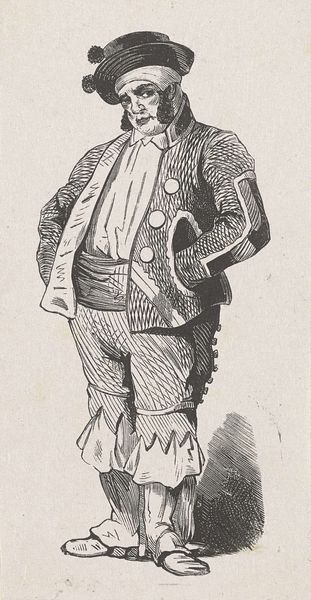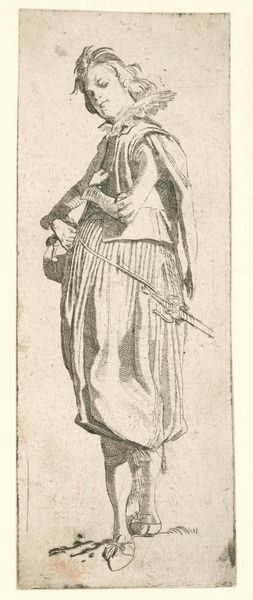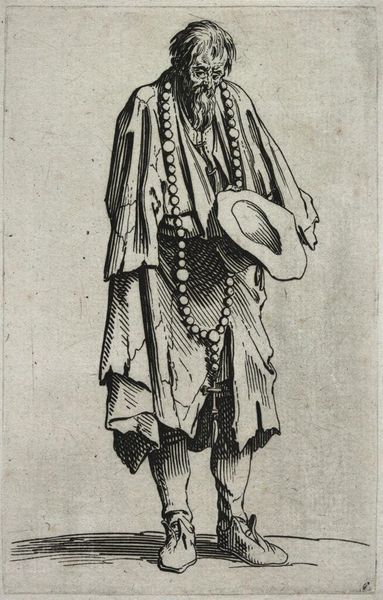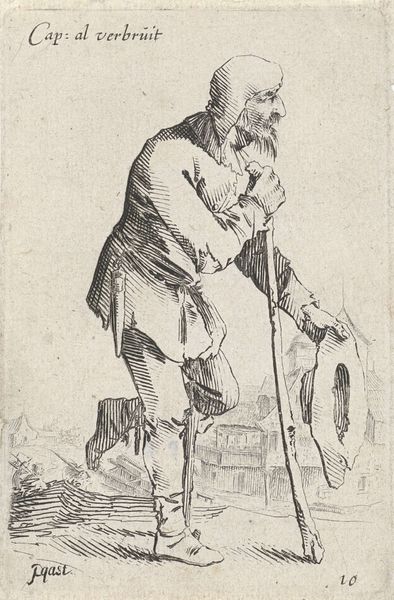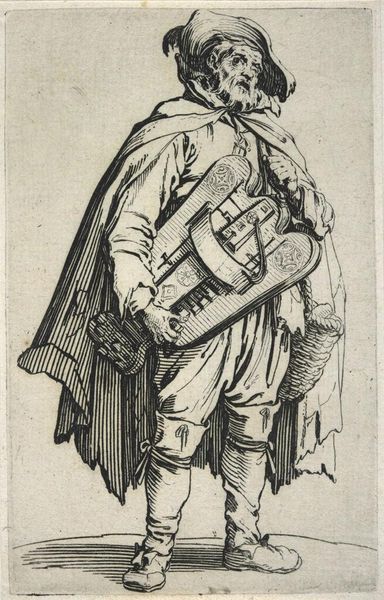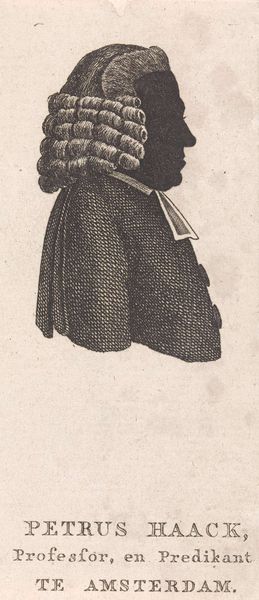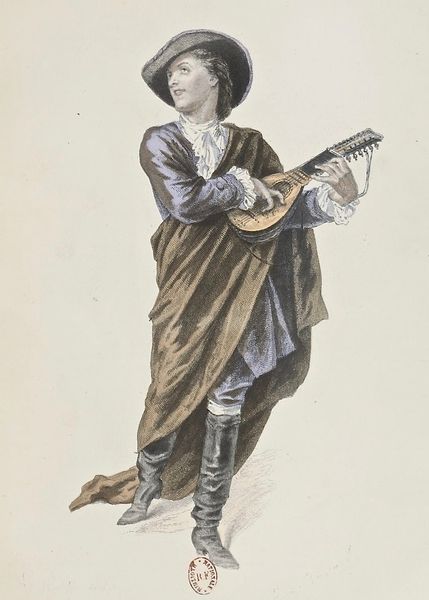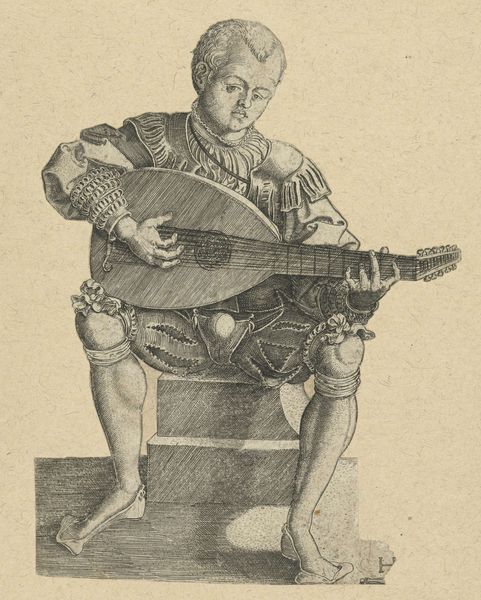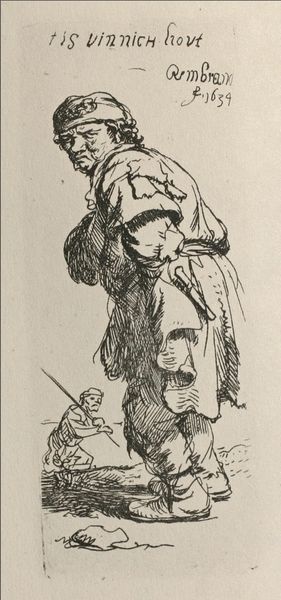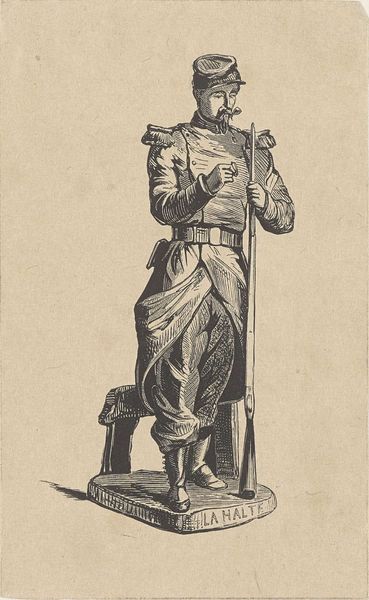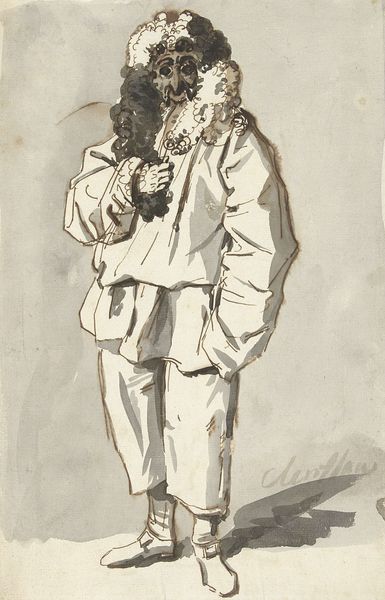
#
imaginative character sketch
#
light pencil work
#
quirky sketch
#
pencil sketch
#
personal sketchbook
#
idea generation sketch
#
sketchbook drawing
#
pencil work
#
sketchbook art
#
fantasy sketch
Dimensions: height 142 mm, width 72 mm
Copyright: Rijks Museum: Open Domain
Editor: This is Isaac Weissenbruch’s "Standing Young Man Playing a Stringed Instrument," made sometime between 1836 and 1912. It's a pencil sketch, and I find its looseness quite charming. What really strikes me is the almost theatrical quality of the figure. How would you interpret this work? Curator: Well, it’s fascinating to consider the social context of such sketches. During the 19th century, there was an increasing fascination with capturing everyday life, but also with romanticized portrayals of itinerant musicians and performers. Think about the rise of the bourgeoisie and their desire to define their own cultural identity – how does this image contribute to, or challenge, that idea? Editor: That’s a good point. The subject’s clothing does seem a bit fanciful, perhaps more stage costume than street wear. Was there a political dimension to depicting such figures? Curator: Absolutely. Images of traveling players, sometimes associated with bohemian subcultures, could become potent symbols of resistance against the establishment. Or, conversely, they might serve as nostalgic representations of a pre-industrial past. How do you read the artist's intention in presenting this figure? Editor: I hadn’t considered the element of resistance. The sketch itself seems so informal and private, like a glimpse into the artist's imagination. Maybe he wasn't trying to make any grand statement. Curator: Perhaps not. But even in the most intimate works, artists are participating in a visual dialogue with the world around them. The very act of choosing to depict this subject tells us something about Weissenbruch’s place within the cultural landscape. Editor: That’s a really helpful way to think about it. It pushes beyond just appreciating the aesthetic qualities and invites consideration of its cultural position. Curator: Precisely. Thinking about the "why" behind the "what" of art is key. I've definitely learned to appreciate his work beyond face value!
Comments
No comments
Be the first to comment and join the conversation on the ultimate creative platform.
